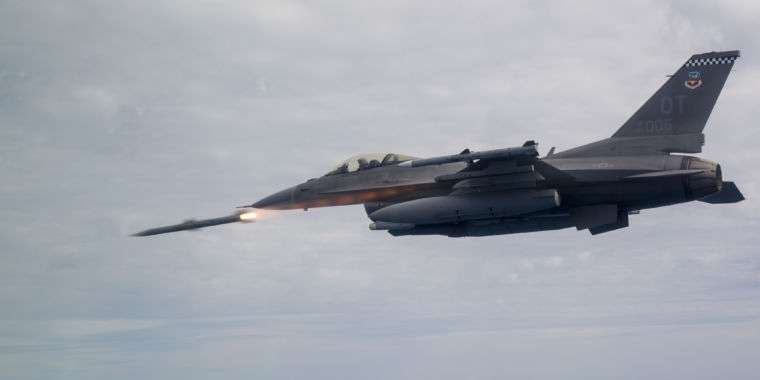
US puts rush order on long-range air-to-air missile

It has been more than a decade since the US retired its last officially designated long-range air-to-air missile, the AIM-54 Phoenix—a Cold War-era weapon that could be used to take on multiple targets from more than 100 nautical miles (190km) at hypersonic speeds (above Mach 5). But the Phoenix was built for the F-14 Tomcat, and the longest-ranged weapon in the quiver of US Navy and Air Force fighter pilots since 2004 has been the AIM-120 Advanced Medium-Range Air-to-Air Missile (AMRAAM)—also known as the “Slammer”—with a somewhat shorter reach (160km, or 86 nautical miles).
Air superiority doctrine for the past two decades has focused on taking the enemy’s aircraft out of the fight before they take off (with cruise missiles and stealth aircraft attacks on airfields) and technological superiority over whatever can get off the ground. The F-22 and F-35 both have emphasized stealth (or at least low observability) over weapon capacity and reach to ensure they can shoot down enemies before they’re even seen. But that’s not an equation that is balancing very well anymore as the US faces increased great-power competition from China and Russia. That is why the Department of Defense is rushing forward with development of a new long-range missile, the AIM-260—also known as the Joint Advanced Tactical Missile.
In 2016, the Chinese military successfully tested the PL-15, a very-long-range air-to-air missile (VLRAAM) with a range of more than 200km and a speed faster than Mach 5. Some sources have claimed the PL-15 has a range of more than double that—over 400km. With a length of over six meters, the PL-15 is intended to break the legs of US airpower by targeting the aircraft supporting strike missions—US Air Force and Navy refueling and airborne early warning and control aircraft.
China is also developing the PL-21, a hypersonic ramjet-based missile that could potentially have the same reach in a more compact package. And the Russians have the Vympel R-37 M, which also has a range of more than 300km and a top speed of Mach 6.
In 2017, US Air Force General Herbert “Hawk” Carlisle cited the Chinese missiles in a call for a new, longer-ranged missile that would allow the Air Force and Navy to “out-stick” the PL-15. That need drove the development by Lockheed Martin of the AIM-260. Scheduled to begin testing in 2021, the AIM 260 is expected to enter service in 2022. While it will be about the same size as the AIM-120, it will have a significantly greater range—at least one matching that of the PL-15.
Listing image by US AIr Force (Senior Airman Joshua Hopkins, 40th Flight Test Squadron)




